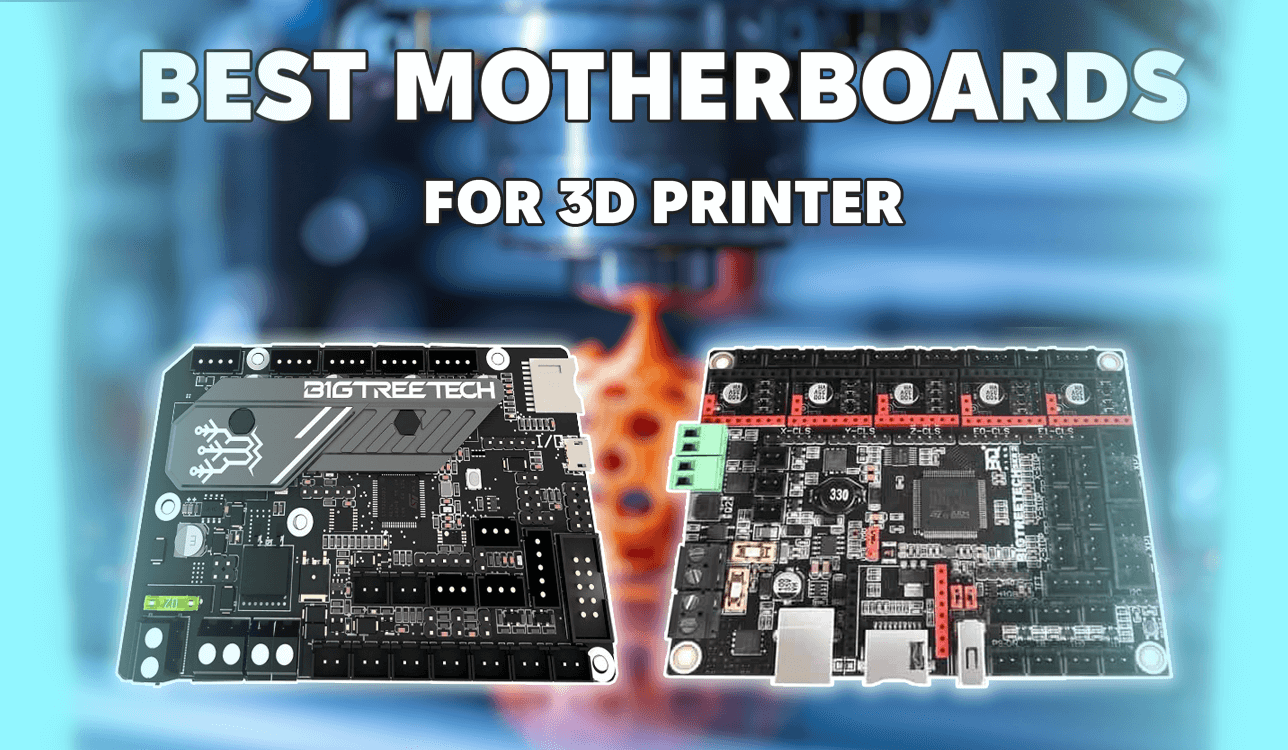
The 3D printer is an indispensable assistant in my video and image editing workflow. But it is crucial to find the best motherboard for my 3D printer, otherwise, you’ll face various unpleasant issues like excessive noise and vibration, and limited customization options, which lead to frequent print failures like visible layer lines, warping, and other problems.
With the best motherboards, I managed to improve the quality of my prints and make the printing process more reliable. The benefits of installing these upgrades are more stable performance, enhanced control, and functionality for producing consistent and pro-level 3D prints with ease.
Since the range of devices is quite large, choosing the best motherboard for 3D printer is a brain teaser. To help you make the right decision and choose the appropriate device, I have written this overview. I handpicked motherboards from various price ranges, from $9.39 to $91.99.
 BIGTREETECH SKR Mini E3 V3.0
BIGTREETECH SKR Mini E3 V3.0
After testing multiple models, I came to the conclusion that BIGTREETECH SKR Mini E3 V3.0 is probably the best motherboard for 3D printers because it offers a sweet spot between performance, ease of use, and top-notch features. Thanks to a 32-bit ARM Cortex-M4 CPU, the chip operates smoothly and reliably, while the TMC2209 drivers deliver noiseless and highly accurate stepper control.
A 3D printer can hardly function without a controller board that is responsible for electronic functions. If a printer lacks a board, you can only turn some components on and off manually. Controller boards handle all 3D printing logic, including G-code file analysis, temperature, and motion control. Motion control is a key option when it comes to FDM and stepper motors.
When selecting the best motherboard for my 3D printer, I took several key factors into account:
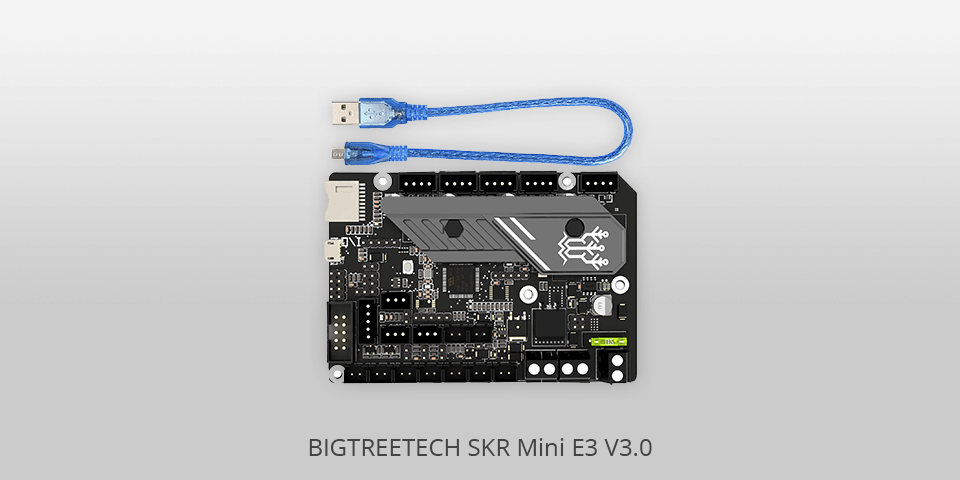
Processor: ARM level Cortex-M3 series | Socket: LGA1200 | Main Chip: STM32G0B1RET6 | Input power: 12/28V | Connections: Micro USB
Recently, I enhanced the Ender 3 printer with the BIGTREETECH SKR Mini E3 V3.0 control board, which made the difference. The highlight of this model is a main control chip, which guarantees efficient and powerful functionality. The board’s compatibility with other printer models like Ender 3 Pro, Ender 5, Ender 5 Plus, CR-10, etc. is a considerable plus as well.
Installation was worry-free. This motherboard under $200 was an ideal match, and it was delivered with clear and easy-to-follow instructions. The mini form factor is actually smaller than the regular ATX form factor of motherboards thus, allowing the device to be placed in smaller spaces. I managed to achieve my printer’s performance boost in virtually no time, and the decrease in noise level became noticeable immediately.
With three more CNC fans, the heat dissipation became much better. Thanks to them, there was no overheating even during long printing sessions, so worry-free performance and longevity of the board are guaranteed. The upgraded drive heat sink contributes even more to greater heat dispersion capacity, which is pivotal for maintaining top-notch performance.
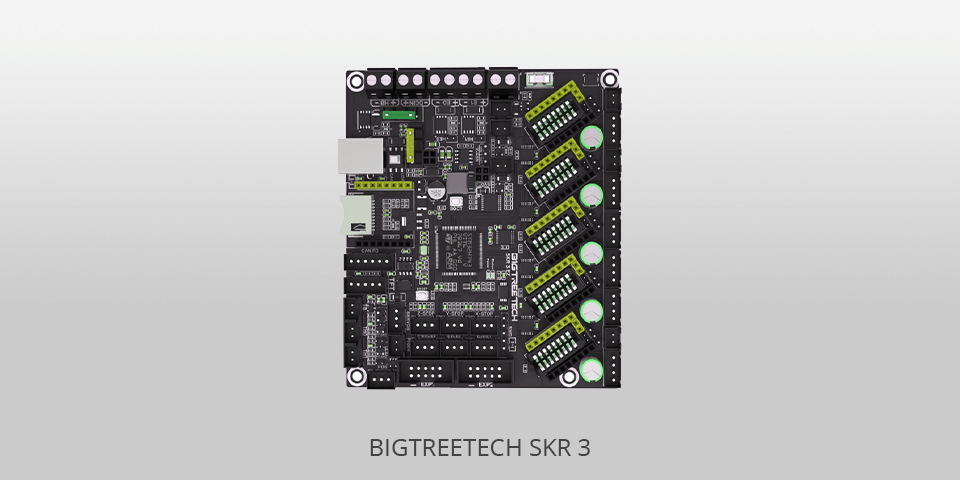
Processor: 32-bit ARM Cortex-M7 series | Socket: EZ series and TMC series | Core Frequency: 480MHz | Main Chip: STM32H743VIT6 | Input power: 12/24V | Connections: USB
I decided to upgrade my Ender 3 3D printer with this motherboard, and its performance improved in a flash. Thanks to EZ Drivers, the installation was a no-brainer. As for print quality, it pleased me with the absence of noticeable layer shifts.
I was also impressed with the printer’s noiseless operation, so I could do other tasks without any distractions waiting till my 3D design was ready. Served by three controllable fans, the device remained cool even during long hours of continuous work, making the workflow more efficient.
I used DFU to upgrade the motherboard boot program with the help of the reserved BOOT button. Another highlight of this model is robust runaway protection, which prevents my printer from overheating, giving me a feel of secure and trouble-free work.
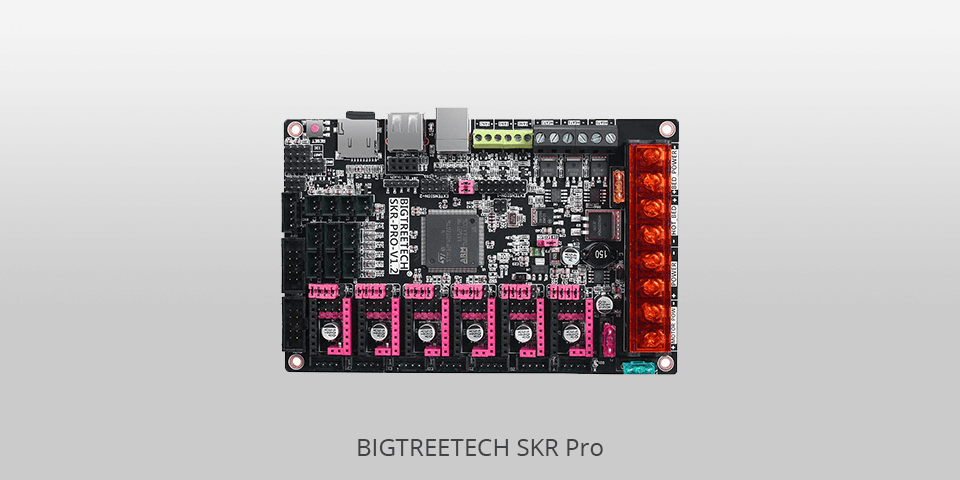
Processor: 32-bit ARM Cortex-M4 series | Core Frequency: 168MHz | Main Chip: STM32F407ZGT6 | Input power: 4.75V/36V | Connections: USB
A powerful chip is a selling point of the BIGTREETECH SKR Pro, which ensures flawless performance. This motherboard is compatible with Marling 2.0 firmware for worry-free customization and further development. This model stands out because of its extensive compatibility with various motor drivers including TMC2209, TMC2208, and more.
I exploited the SKR Pro to manage a dual Z-axis 3D printer with three extruders in my setup. The board performed flawlessly, so the printing process was smooth and accurate, even when implementing the most sophisticated and creative 3D printing ideas.
The board offers a range of other top-notch features like support for serial Wi-Fi online printing, six motor drives, three extruders, and three CNC fans, so this solution is ideal for those who need to perform complex projects. This model also appeals to users with a full compatibility of Z-axis printers.
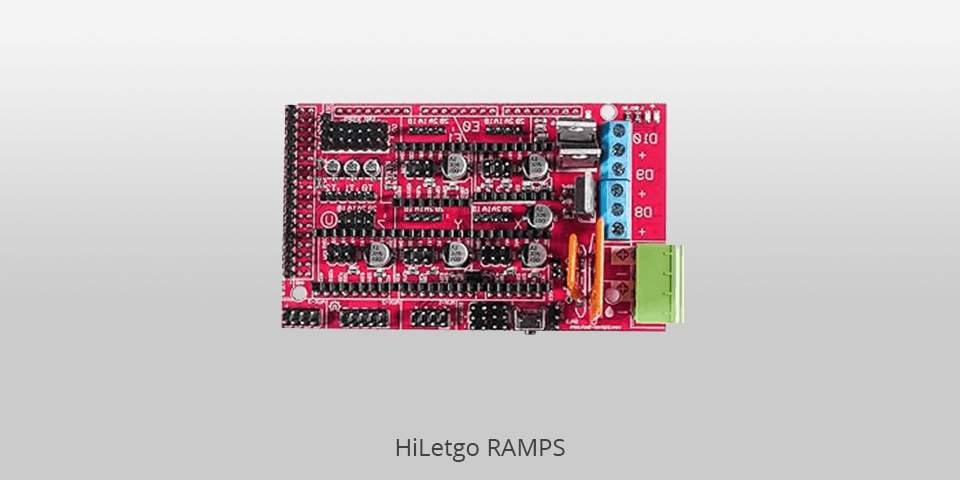
Processor: Ramps 1.4 | Form Factor: mATX | Socket: LGA1200 | Input power: 5V/12V | Connections: USB
HiLetgo RAMPS is a motherboard for 3D printer, which is based on the new technology of High-Performance Solid State Print (SSP). The advantages of choosing the SSP-based motherboard are that its speed is almost double the normal rate of the motherboard and also the cost is almost half.
I took advantage of this budget motherboard to enhance the performance of an older 3D printer. The board has a modular design, so I had no issues replacing the non-working components. The ability to customize the fifth stepper motor output port as a second extruder was precious, as my printer became more versatile.
As this model is equipped with Pololu board pin sockets, I had no trouble with integration and future updates. The top-notch protection is another reason why this model is so appealing. Its 11A fuse for heated bed control and the integration of extra 5A component protection make the product even more reliable. HiLetgo RAMPS is the best fit for users who want to upgrade their traditional 3D printing setups without exhausting their budgets.
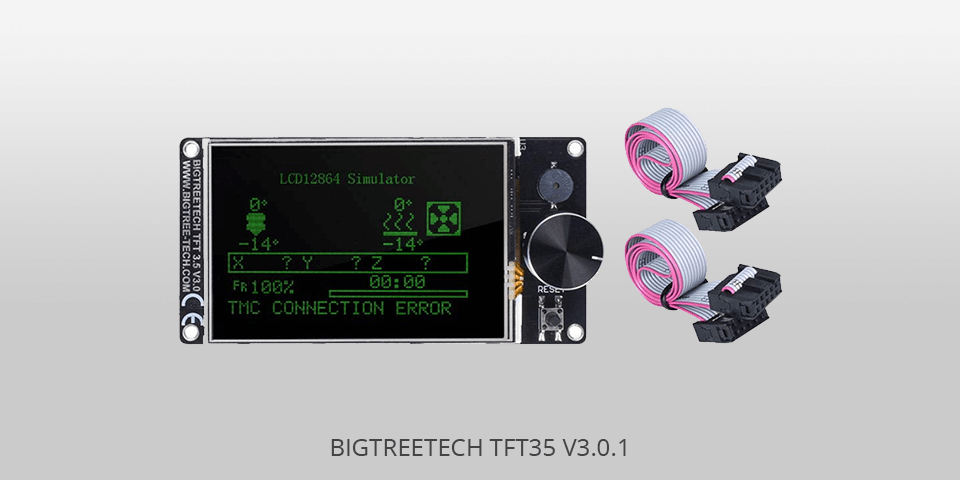
Processor: ARM level Cortex-M3 series | Form Factor: mATX | Core Frequency: 120MHz | Main Chip: STM32F207VCT6 | Input power: 5V | Connections: USB
The BIGTREETECH TFT35 V3.0.1 motherboard for 3D printer has two USB ports, which allow me to connect my printer directly to a computer. There are no drivers required to use the printer with my current computer. It comes with a touchscreen full-color screen that displays resolution, and extrusion pressure.
The motherboard has a total of six expansion slots, which are accessible through the holes on the side of the computer and provide for easy installation. I upgraded my budget 3D printer Ender 3 with this chipset and the result really impressed me. Navigating the settings and options with a touchscreen UI was a cinch. Besides, users can also switch back to the Marlin interface enjoying a high flexibility of the workflow.
Although SD card slot was not my priority, being able to take advantage of various printing modes and the availability of expansion ports has been a great plus for me. This mode is especially suitable for users who would like to get full control over the printing process and appreciate an intuitive interface.
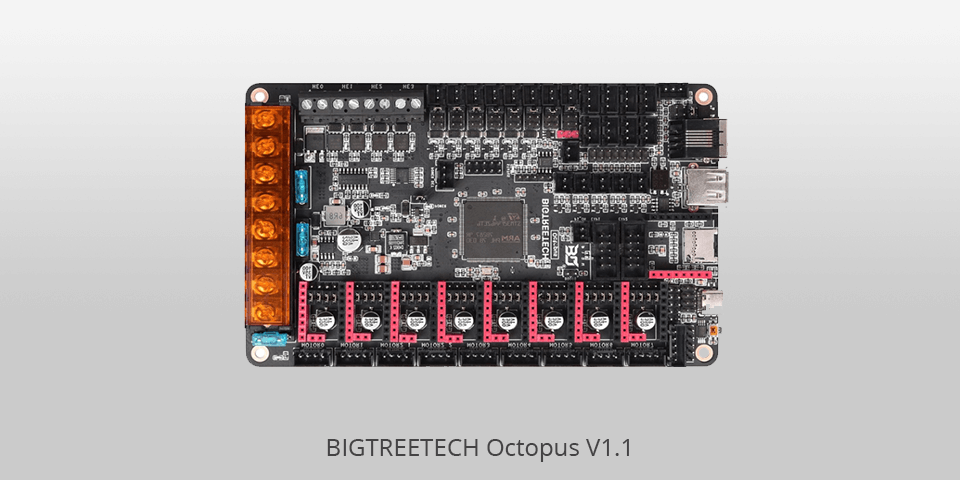
Processor: 32-bit ARM Cortex-M4 series | Core Frequency: 180 MHz | Main Chip: STM32F446ZET6 | Input power: 24V | Connections: USB-C
This board is fitted with a fast main control chip, so a smooth and strong performance is guaranteed. Besides, you will enjoy a high level of customization, as this model supports many stepper drivers and fans. TMC2209 stepper drivers function silently and stay cool making the printing process more efficient. The support of different expansion functions and UIs adds more points to the product.
The Octopus V1.1 came in handy when I needed to update my 3D printer. I managed to improve my printer’s performance thanks to dual Z-axis support and multiple fans, and thanks to quiet stepper drivers the printing process became absolutely noiseless. This board is ideal for pro-level users and DIY enthusiasts who are looking for a customizable and highly functional chip for their 3D printers.
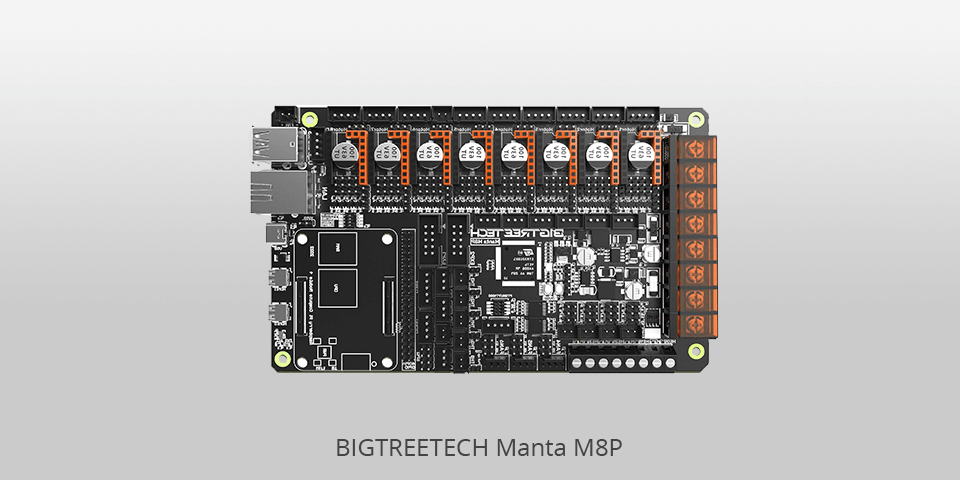
Processor: 32-bit ARM Cortex-M0+ series | Core Frequency: 64 MHz| Main Chip: STM32G0B1VET6 | Input power: 12V/24V | Connections: USB Type-C, Ethernet, Wi-Fi
I upgraded my original Ender 3 with the BIGTREETECH Manta M8P. The installation process was intuitive. This model comes with Marling firmware pre-installed, so I was able to launch the printing process in an instant. Another feature I appreciate is a fantastic noise reduction option, with only a slight noise coming from the power supply. This model is an ideal fit for Voron 2.4, RatRig, and VzBoT printers.
My printing experience became much better thanks to this board, and the printed 3D models with both PLA and TPU materials were amazing. I also like that updating the firmware via SD card is a no-brainer, and the availability of the "make flash" command is a considerable plus as well. A great variety of fan control options ensure high customizability. Besides, I did not need external modules to make the board compatible with this motherboard for 3D printer.
Firmware support. When shopping for the best motherboard for 3D printer, pay attention to its compatibility. Make certain that the board can work with the firmware you are going to use (e.g., Marlin, Repetier, Smoothieware).
Stepper drivers. When choosing a controller, consider stepper drivers. Drivers control stepper motors by bringing electrical signals to them. Stepper motors control the movement of extruders and nozzles on the print bed. Since stepper drivers control the operation of stepper motors, they greatly affect the way your printer works.
Communication styles. When you print a 3D model, you need to use the source of the targeted design. Typically, this source may be a computer, SD card, mobile phone, etc. In this case, connectivity plays a big role. The list of major ports includes mini USB, micro SD, and USB type A and C or you can choose a printer with wireless connectivity.
Processor performance. The power of a processor plays a key role in the overall functioning of your printer. Whereas older printers had an 8-bit processor, updated models, due to the latest technology, are fitted with high-quality 32-bit processors.
Expandability. Check whether the selected board offers some extra features like dual extruders, auto bed leveling, and filament runout sensors. Expandability guarantees that your printing setup can be upgraded with new components to satisfy your growing needs.
Cooling and power management. If you want to enjoy a smooth, trouble-free, and long-lasting performance of your motherboard, make sure that its cooling system is top-notch and power management is efficient.
Community Support: Prefer boards that offer excellent community support and come with all the needed documentation. This will help you solve any issues or build the setup worry-free.
Budget. Consider your budget when shopping for a motherboard for 3D printer. Top-level models have more features but they are pricier. If these options are essential for you, then it is worth the investment.